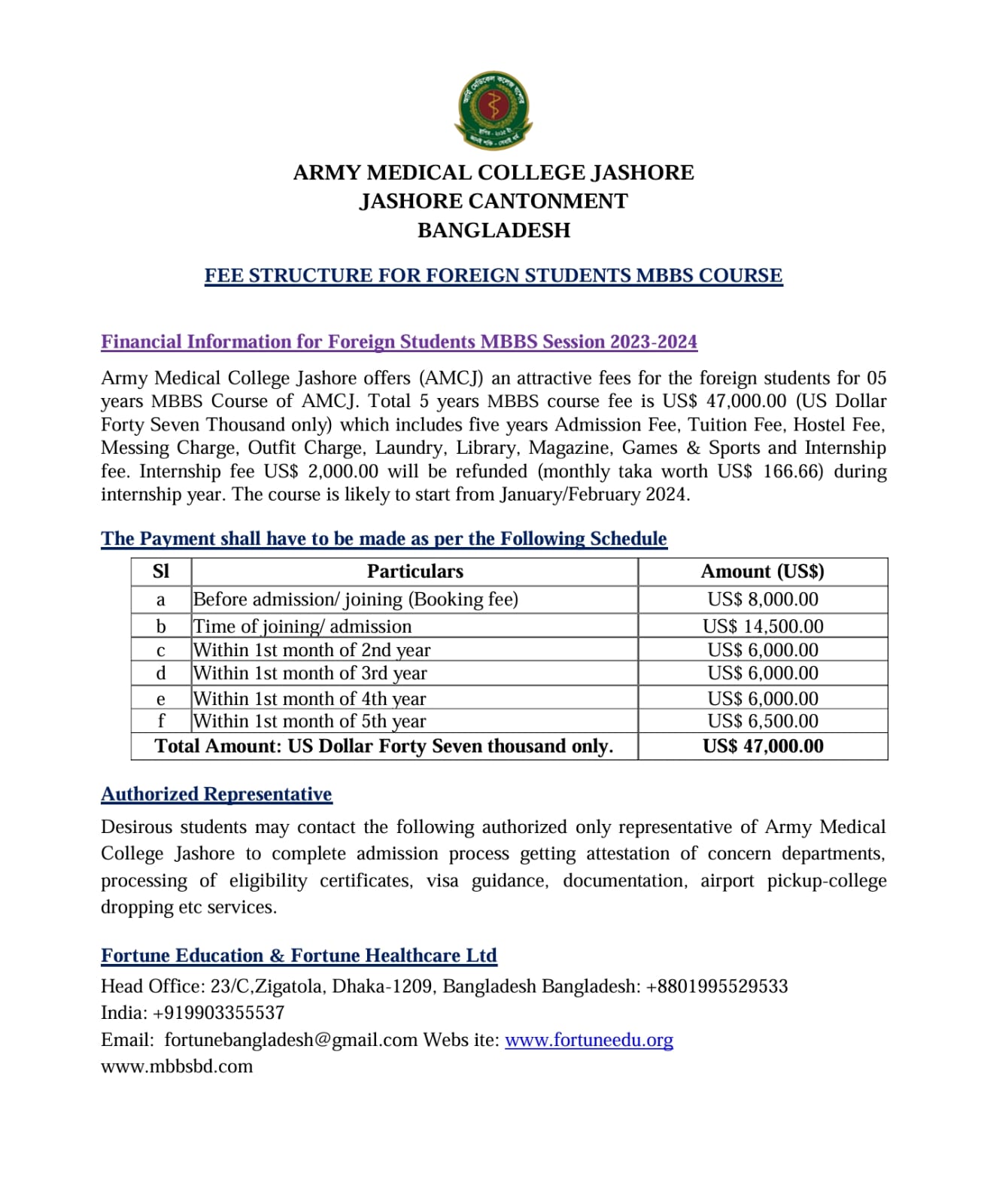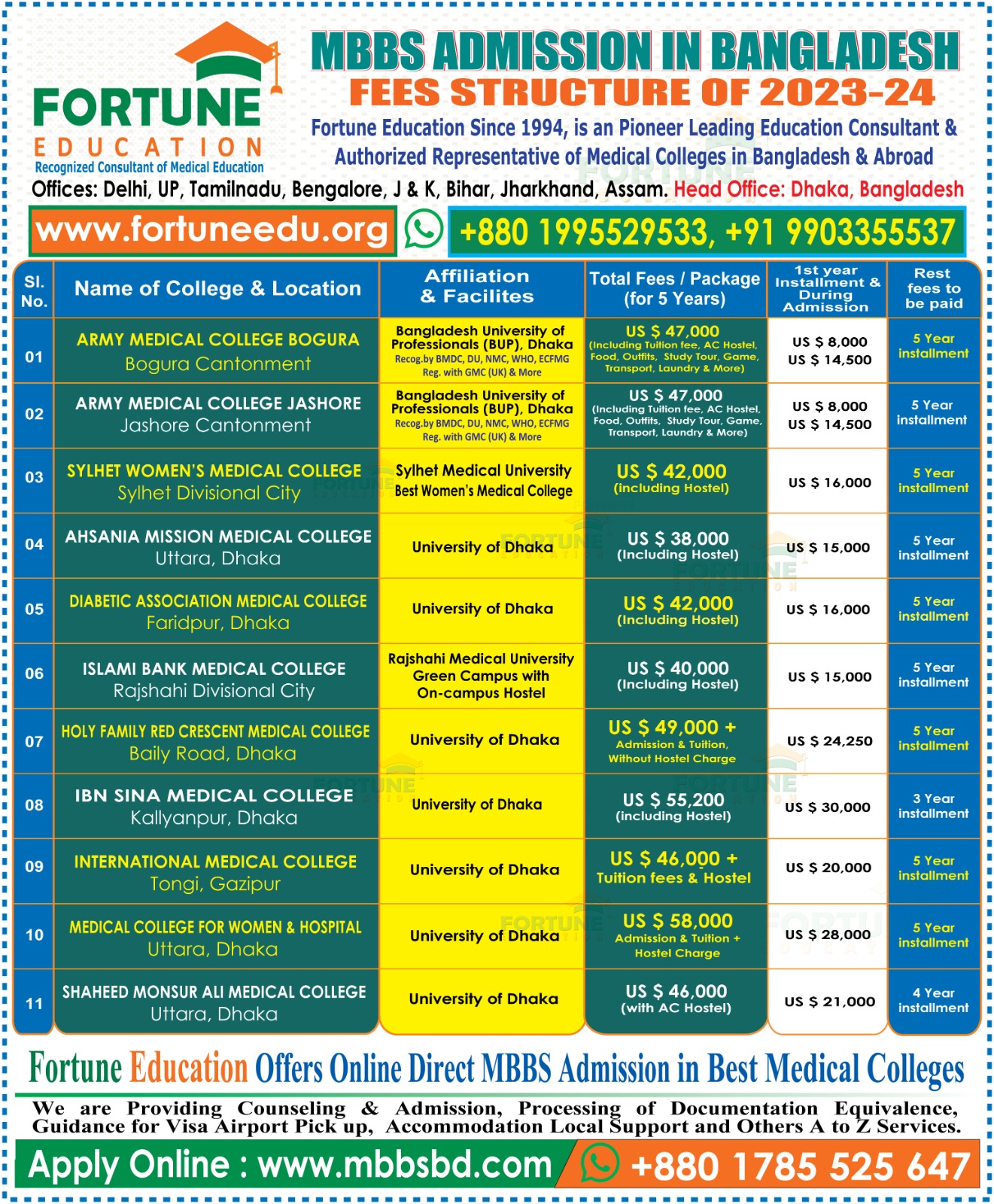The fee structure for MBBS programs in Nepal can vary significantly depending on several factors, such as the type of college (government or private), location, and the specific policies of the institution. Generally, studying MBBS in Nepal is considered a cost-effective option for many students, especially those from neighboring countries like India. Here’s a general overview of the fee structure for MBBS in Nepal as of my last update in April 2023:
MBBS Fees Structure in Nepal
Government Medical Colleges: These colleges usually have lower fees compared to private institutions. The total cost for the MBBS program in government colleges can range from approximately NPR 3.5 million to NPR 4 million (which is roughly equivalent to USD 28,000 to USD 32,000).
Private Medical Colleges: Private colleges tend to charge higher fees. The total cost for the MBBS program in private colleges can range from NPR 8 million to NPR 9 million (about USD 64,000 to USD 72,000).
Additional Costs: Besides tuition fees, students should also consider additional expenses such as accommodation, food, books, and other living costs. These can vary based on the location of the college and the lifestyle of the student.
Scholarships and Financial Aid: Some colleges offer scholarships or financial aid to international students, which can significantly reduce the overall cost.
Payment Structure: The payment structure for MBBS courses in Nepal usually involves paying the fees in installments over the duration of the course.
It’s important to note that these figures are indicative and subject to change. The exact fee structure can vary from year to year and from college to college. Students are advised to check the latest fee structure directly from the colleges they are interested in or through reliable educational consultants.
Additionally, international students should also consider the exchange rate fluctuations and any additional costs that might arise due to international transactions.
MBBS in Nepal
Studying MBBS in Nepal has become a popular choice for many students, particularly those from neighboring countries like India, due to its affordability, quality of education, and cultural similarities. Here are some key aspects to consider if you are interested in pursuing an MBBS in Nepal:
Advantages of Studying MBBS in Nepal
Quality of Education: Many medical colleges in Nepal offer a high standard of education with well-structured curricula that are similar to those in India and other countries.
Recognition: The degrees from most medical colleges in Nepal are recognized by major medical councils around the world, including the Medical Council of India (MCI), the World Health Organization (WHO), and others.
No Language Barrier: The medium of instruction in most medical colleges in Nepal is English, which is convenient for international students. Additionally, the local population is generally conversant in Hindi, making it easier for students from India.
Clinical Exposure: Nepal’s diverse demography provides a wide range of clinical exposure which is essential for medical training.
Cost-Effective: Compared to many other countries, the cost of studying MBBS in Nepal is relatively lower, both in terms of tuition fees and living expenses.
Considerations
Eligibility Criteria: Candidates usually need to have completed 10+2 education with Physics, Chemistry, and Biology, and must have passed an entrance exam or meet a certain threshold in standardized tests like NEET.
Duration: The duration of the MBBS course in Nepal is generally 5.5 years, including a period of internship.
Accreditation and Recognition: It’s crucial to check the accreditation of the college and ensure that its degree is recognized by the medical council in your home country.
Cultural Adaptation: While Nepal is culturally similar to certain parts of India, international students may still need some time to adapt to the local culture and practices.
Climate: The climate in Nepal varies from region to region, and it’s something students might need to adjust to, especially if they are from a different climatic zone.
Selecting a Medical College
When choosing a medical college in Nepal, consider factors like:
Accreditation and recognition
Quality of faculty and infrastructure
Hospital affiliations for clinical training
Fees and scholarship opportunities
Alumni network and post-graduation opportunities
Application Process
The application process typically involves:
Meeting the eligibility criteria
Appearing for entrance exams (if required)
Submitting academic records and other necessary documents
Going through an interview process in some cases
Preparing for the Journey
Obtain a student visa
Arrange for accommodation and living expenses
Familiarize yourself with the local culture and language
Pursuing an MBBS in Nepal can be a rewarding experience, provided you carefully choose your college and prepare for the academic and cultural journey ahead. It’s recommended to visit the colleges if possible, talk to current students or alumni, and thoroughly research all aspects before making a decision.




